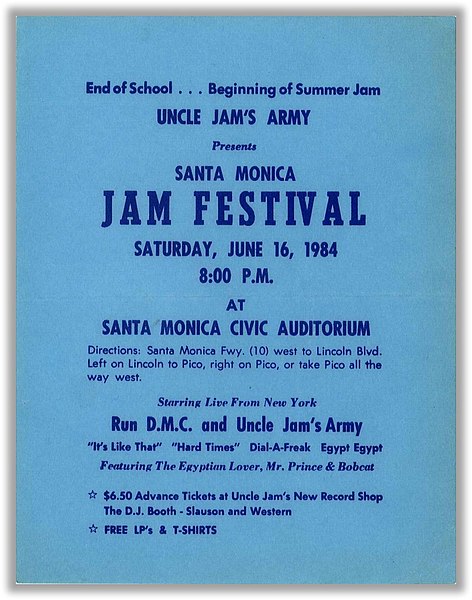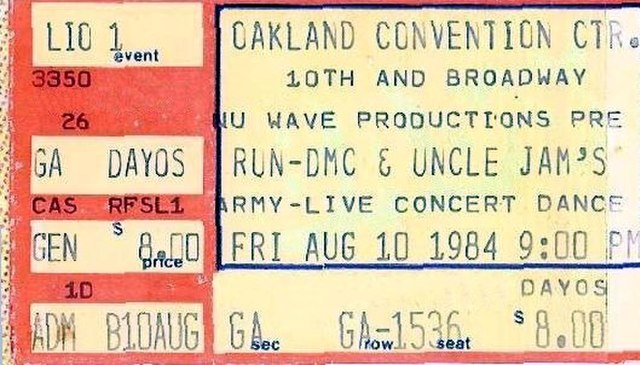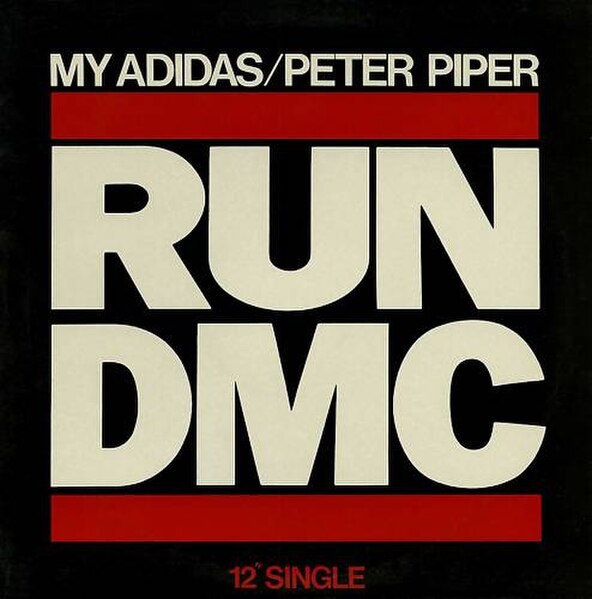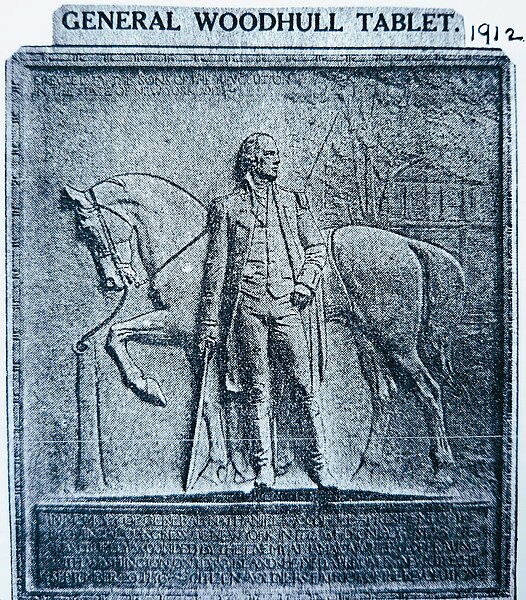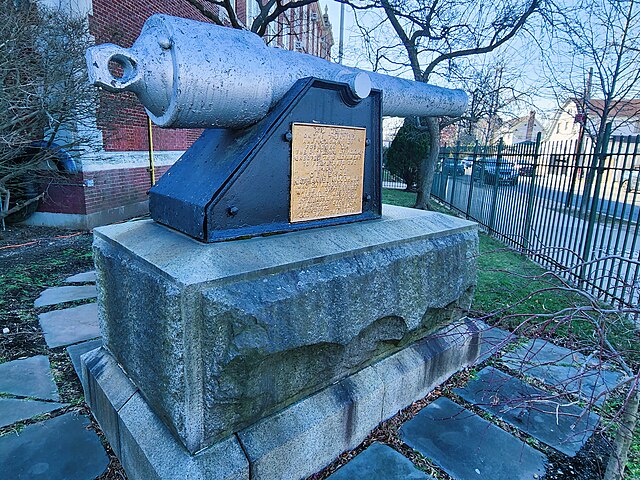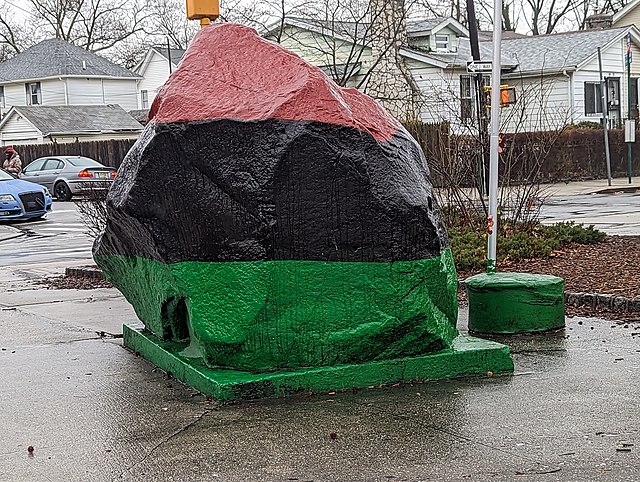Run-DMC was an American hip hop group from Hollis, Queens New York, formed in 1983 by Joseph Simmons, Darryl McDaniels, and Jason Mizell. Run-DMC is regarded as one of the most influential acts in the history of hip hop culture and especially one of the most famous hip hop acts of the 1980s. Along with Beastie Boys, LL Cool J, DJ Jazzy Jeff & the Fresh Prince, and Public Enemy, the group pioneered new-school hip hop music and helped usher in the golden age of hip hop. The group was among the first to highlight the importance of the MC and DJ relationship.
A poster for a Southern California concert starring the group in 1984
A ticket for a 1984 concert in Oakland, California
12" single cover for the group's single "My Adidas"
Run-DMC in Paris, 1987
Hollis is a residential middle-class neighborhood within the southeastern section of the New York City borough of Queens. While a predominantly African-American community, there are small minorities of Hispanics and South Asians residing in the area. Boundaries are considered to be 181st Street to the west, Hillside Avenue to the north, Francis Lewis Boulevard to the east, and Murdock Avenue to the south. Hollis is located between Jamaica to the west and Queens Village to the east.
St. Gabriel's Hollis Episcopal Church
Woodhull Tablet P.S.35
General Nathanial Woodhull Parrot rifle at P.S.35
Liberty Rock, Hollis-St. Albans, Queens, New York

